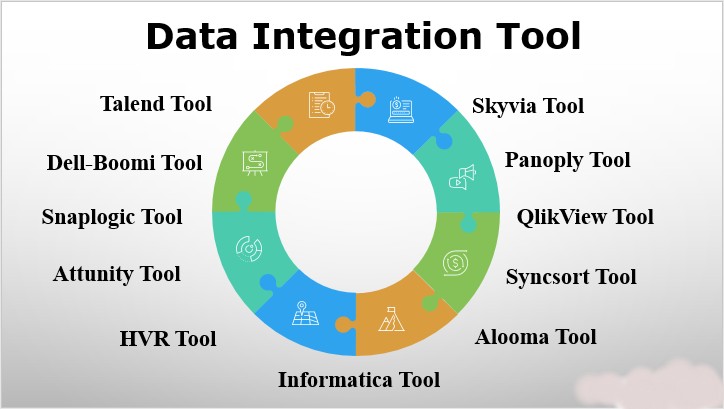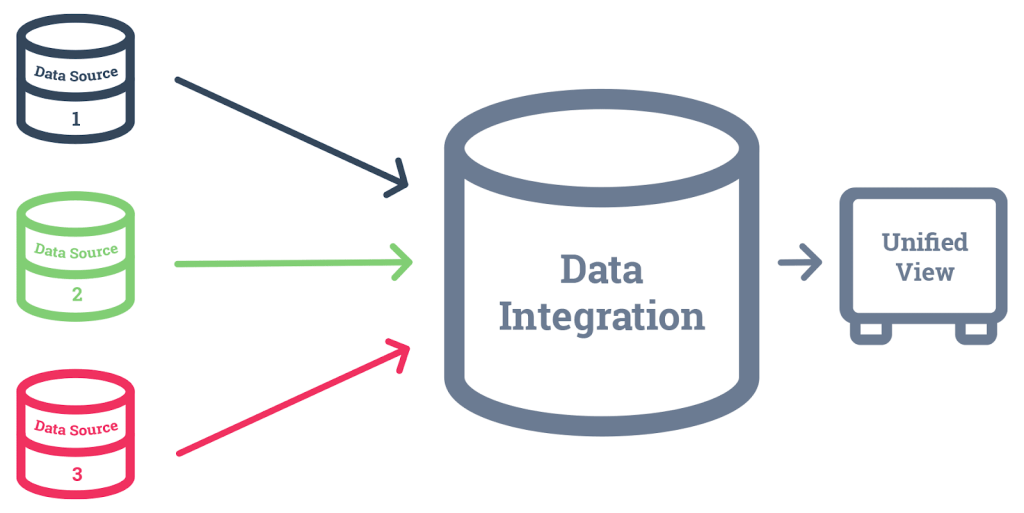
What is Data Integration?

Data integration is the process of combining data from different sources and transforming it into a unified view that can be used for analysis and decision-making. The aim is to create a single, comprehensive view of data that can be easily accessed by different users within an organization.
Why is Data Integration Important?
Data integration is essential for any organization that collects data from multiple sources. It helps to eliminate data silos, ensuring that all the data is consistent and accurate across different systems. This leads to better decision-making, increased efficiency, and improved productivity. Without data integration, organizations may struggle to identify key insights and opportunities.
Benefits of Using Data Integration Tools
Improved Data Quality
Data integration tools help to ensure that the data is consistent and accurate across different systems. This leads to improved data quality, ensuring that organizations can rely on the data to make informed decisions.
Increased Efficiency and Productivity
Data integration tools automate the process of combining data from different sources, eliminating the need for manual data entry and manipulation. This leads to increased efficiency and productivity, as employees can spend more time analyzing data and less time managing it.
Better Decision Making
Data integration tools provide a single, comprehensive view of data that can be easily accessed by different users within an organization. This leads to better decision-making, as employees can identify key insights and opportunities that may have been missed if the data was stored in different systems.
Types of Data Integration Tools
ETL Tools
ETL (Extract, Transform, Load) tools are used to extract data from different sources, transform it into a common format, and load it into a data warehouse or other destination system. ETL tools are commonly used in large-scale data integration projects.
Data Virtualization Tools
Data virtualization tools create a virtual layer of data that can be accessed by different systems and users. This layer provides a unified view of the data without physically moving it. Data virtualization tools are commonly used in real-time data integration projects.
Data Replication Tools
Data replication tools replicate data from different sources to a central location, creating a synchronized copy of the data. This ensures that the data is consistent across different systems and can be easily accessed by different users within an organization.
Data Migration Tools
Data migration tools are used to transfer data from one system to another. This is commonly used when migrating data from legacy systems to new systems.
Key Features to Look for in Data Integration Tools
Scalability
Data integration tools should be able to handle large amounts of data and scale as the organization grows.
Flexibility
Data integration tools should be flexible enough to integrate data from different sources and formats.
Security
Data integration tools should have strong security features to protect sensitive data.
Automation
Data integration tools should automate the process of combining data from different sources, eliminating the need for manual data entry and manipulation. This leads to increased efficiency and productivity.
Challenges of Data Integration and How to Overcome Them
Data integration is a process that involves combining data from different sources and making it usable for analysis and decision-making. However, there are several challenges that organizations face when it comes to data integration. Here are some of the most common challenges and ways to overcome them:
Data Quality Issues
Data quality is a major issue in data integration because data from different sources can vary in terms of completeness, accuracy, and consistency. To overcome this challenge, organizations need to establish data quality rules, conduct data profiling to identify problems, and implement data cleansing processes to correct issues.
Data Compatibility Issues
Data compatibility issues arise because different sources can use different data formats, database structures, and coding languages. To overcome this challenge, organizations need to establish data integration standards that ensure data is transformed into a common format before being combined.
Integration with Legacy Systems
Legacy systems are outdated software applications that can be difficult to integrate with modern data integration tools. To overcome this challenge, organizations need to use middleware tools that can bridge the gap between legacy systems and new data integration tools.
Best Practices for Implementing Data Integration Solutions
Implementing data integration solutions can be complex, but by following best practices, organizations can ensure success. Here are some best practices for implementing data integration solutions:
Define Your Requirements
Before implementing a data integration solution, organizations need to define their requirements based on their business goals. This step involves understanding the data sources that need to be integrated, the frequency of integration, the data quality requirements, and more.
Select the Right Tools
Selecting the right data integration tool is critical to success. Organizations need to evaluate different tools based on their features, scalability, ease of use, and cost.
Implement a Data Governance Strategy
Data governance is a framework for managing data assets by establishing policies, standards, and processes for data quality, security, and compliance. Implementing a data governance strategy is important because it ensures that data is accurate, secure, and compliant.
Future Trends in Data Integration
Data integration is an ever-evolving field, and there are several future trends that organizations need to watch out for:
Artificial Intelligence and Machine Learning
Artificial intelligence and machine learning are technologies that are being used to automate data integration tasks, reduce errors, and improve accuracy.
Cloud-Based Integration
Cloud-based integration is becoming more popular because it allows organizations to store and manage data in the cloud, which is more flexible and scalable than traditional data storage methods.
Self-Service Data Integration
Self-service data integration is a trend that allows business users to integrate data themselves without the need for IT support. This trend is becoming popular because it allows organizations to be more agile and responsive to changing business needs.
Case Studies: Successful Data Integration Implementations
Successful data integration implementations can provide valuable insights into how organizations can overcome challenges and implement best practices. Here are two case studies of successful data integration implementations:
Case Study 1: Company X
Company X is a global manufacturer of consumer electronics. The company implemented a data integration solution that allowed it to combine data from multiple sources, including ERP systems, CRM systems, and production systems. By doing so, the company was able to improve visibility into its supply chain, reduce costs, and increase customer satisfaction.
Case Study 2: Organization Y
Organization Y is a healthcare provider that implemented a data integration solution that allowed it to combine patient data from multiple sources, including EMR systems, lab systems, and imaging systems. By doing so, the organization was able to improve patient care, reduce costs, and comply with regulatory requirements.In conclusion, data integration tools play a critical role in helping organizations manage and analyze vast amounts of data from multiple sources more efficiently. By selecting the right tool and implementing best practices, organizations can overcome data integration challenges and gain valuable insights to drive better decision-making. As technology advances, we can expect to see more sophisticated data integration solutions that leverage artificial intelligence, machine learning, and cloud-based technologies. By keeping up with these trends and continuously improving their data integration capabilities, organizations can stay competitive in today’s data-driven market.
FAQ
What is the difference between ETL and data replication tools?
ETL (Extract, Transform, Load) tools are used to extract data from various sources, transform it, and then load it into a target system. Data replication tools, on the other hand, are designed to copy data from one database to another in real-time. ETL tools are ideal for batch processing, while data replication tools are best for real-time data synchronization.
What are some common challenges organizations face when implementing data integration solutions?
Organizations may face data quality issues, compatibility issues, and integration challenges with legacy systems. Additionally, they may encounter data security and privacy concerns, scalability issues, and budget constraints.
What are some key features to look for when selecting a data integration tool?
Key features to look for when selecting a data integration tool include scalability, flexibility, security, and automation capabilities. Additionally, organizations should consider factors such as ease of use, integration with existing systems, and the vendor’s support and maintenance offerings.
What are some best practices for implementing data integration solutions?
Some best practices for implementing data integration solutions include defining your requirements, selecting the right tools, implementing a data governance strategy, and continuously monitoring and optimizing your data integration process. Additionally, organizations should involve stakeholders and end-users in the implementation process and provide proper training and documentation.